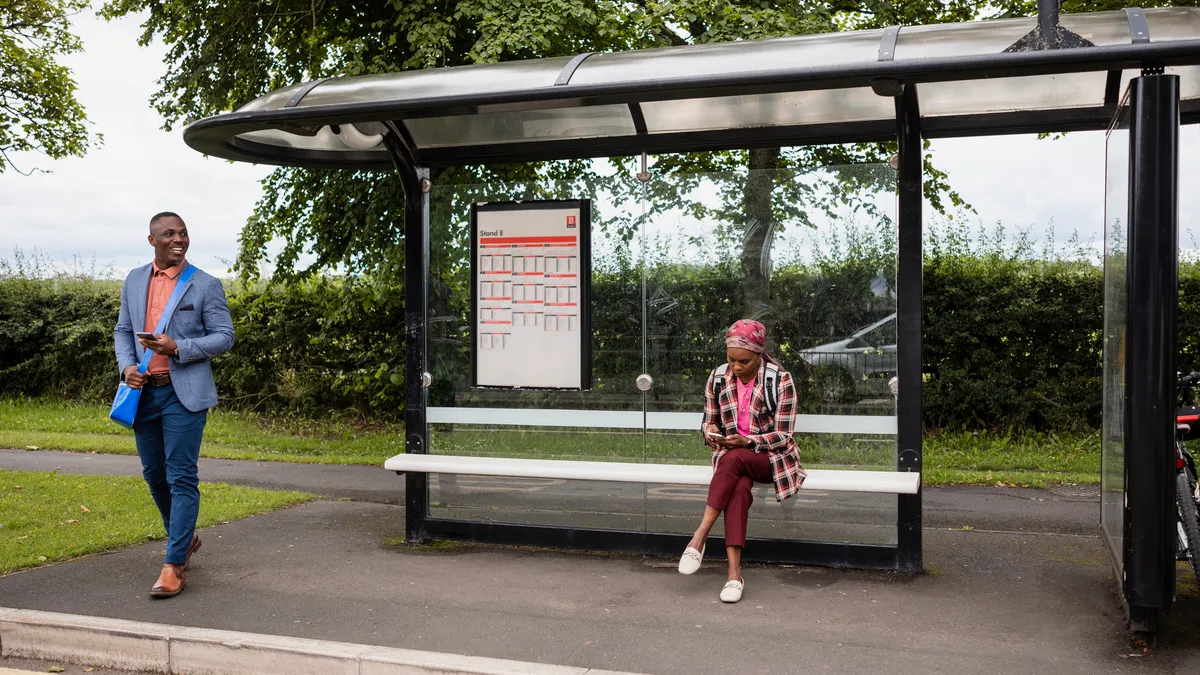Just 26% of bus stops in Los Angeles County have bus shelters, and a majority of those in the hottest parts of the county do not have bus shelters or other sources of shade, according to a new study from the University of California, Los Angeles, Lewis Center for Regional Policy Studies. But LA is not alone in lacking protection for bus riders from extreme weather conditions.
According to data compiled by the Washington Post last year, less than 20% of more than 122,000 bus stops in use by 16 large U.S. transit agencies have bus shelters. Bus shelters can provide a place to sit; protection from the sun, wind and precipitation; and a sense of safety and security for waiting riders.
In Los Angeles County, where bus riders are largely low-income people of color, “bus riders are chronically underserved and exposed to heat while waiting for transit at stops that lack bus shelters and shade,” the study’s authors wrote.
The study noted that neighborhoods with high Latino populations average temperatures that are four degrees warmer than those with low Latino populations and that “extreme heat days are warmer in neighborhoods with more Black residents than those with fewer Black residents.”
In “priority population tracts” — those California designates as having a higher local environmental pollution burden — the percentage of bus stops with shelters is only marginally higher, 27%, than the county’s average.
Typically, local jurisdictions, not transit agencies, are responsible for installing and maintaining bus shelters, according to the report. That means that some cities will have substantially higher numbers of shelters while others will have relatively few.
The UCLA researchers noted that “extreme heat is becoming a more regular occurrence in Los Angeles and beyond,” and concluded that “government partners will need to prioritize where new shelters are installed and consider how to maximize their benefits.”












